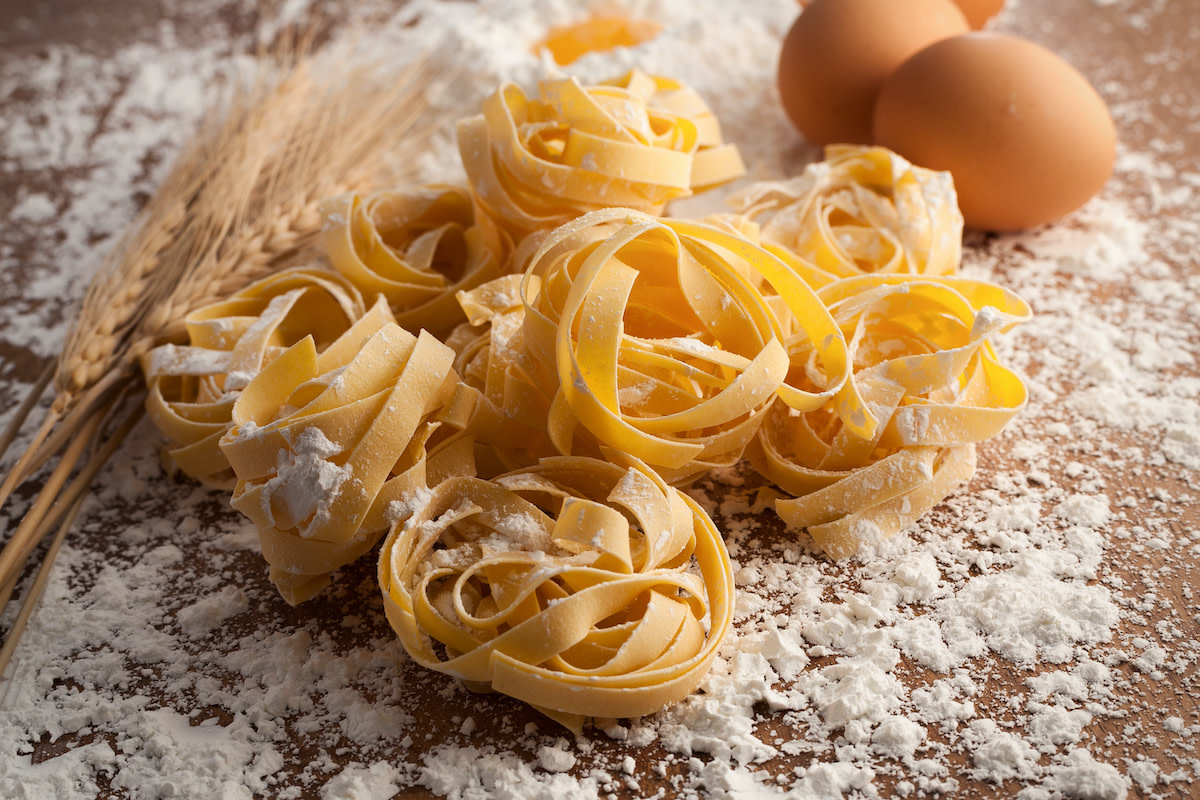Linguine vs. Fettuccine: Which Pasta Sauces Work Best?
Written by MasterClass
Last updated: Sep 10, 2021 • 3 min read
Linguine and fettuccine are both long pastas originating from Italy. However, the differences between linguine and fettuccine can impact your recipes, such as which kinds of sauce pair best with each noodle.
Learn From the Best
What Is Linguine?
Linguine is a type of pasta made of a simple flour and water mixture with origins in the province of Genoa, Italy. Linguine means “little tongues” in Italian and describes the long pasta noodles. Varieties of flours cooks use to make linguine include white flour, whole wheat flour, and on some occasions, almond or potato flour. Linguine noodles are flatter than angel hair, spaghetti, and bucatini pasta noodles.
What Is Fettuccine?
Fettuccine, which translates to “little ribbons” in Italian, is a flat pasta with Roman and Tuscan cuisine roots. Fettuccine noodles are wide, thick, and flat—similar to tagliatelle but a touch narrower. Fettuccine pasta is a combination of eggs and flour. Cooks commonly use these noodles in pasta recipes that include heavy sauces or hearty toppings. This type of noodle does not work as well in recipes that require short pasta shapes, such as recipes for pasta salads or macaroni dishes. For macaroni or pasta salads, other pasta types—like penne, rigatoni, rotini, farfalle, or orecchiette—are better options.
Linguine vs. Fettuccine
Linguine and fettuccine are similar types of pasta but differ mainly in their shape and ingredients. Linguine is a flat but narrow noodle made from a mixture of flour and water, while fettuccine is a flat and wide noodle made of eggs and flour. The ingredients themselves make fettuccine a thicker batter and denser pasta, and the long noodles are cut into significantly wider strips than linguine, giving each fettuccine noodle a greater surface area.
Since linguine is a more delicate noodle, it pairs well with light sauces and is more popular during warm-weather months. The heartier long strands of fettuccine pair better with thicker sauces—often meat sauces—and it’s more common to serve the pasta during the colder winter months. While a linguine pasta dish is a lighter meal, a serving of hearty fettuccine pasta is comparable in heft to a baked ziti, a ravioli, or another heavier Italian food, like an Italian lasagna.
Tips for Serving Linguine and Fettuccine With Sauces
Owing to their differences in heft, linguine noodles and fettuccine noodles pair better with different kinds of sauces. Here are some suggestions for serving these pastas.
- Add alfredo sauce to fettuccine to make a classic. Italians credit Alfredo di Lelio with inventing fettuccine alfredo in the early twentieth century—the famed dish began as fresh pasta tossed with Parmesan cheese and butter. The silky, simple coating for the noodles has since evolved to become modern alfredo sauce, a heavy cream sauce. Now the recipe is a common Italian cuisine menu item worldwide, often topped with clams or meatballs.
- Pair linguine with seafood. Linguine complements seafood well, since the protein is often lighter than other meatier options. Try topping the noodles with a light coat of butter and serving them with clams or fish.
- Use thick sauces with fettuccine. Denser sauces traditionally accompany long ribbon pastas, so pair wide fettuccine noodles with a thick sauce like a bolognese, carbonara, or meat sauce, such as ragu.
- Use thin sauces with linguine. Due to their narrow shape, you can complement delicate linguine noodles with a thin sauce. Linguine pairs well with plain tomato sauces, light tomato-based pasta sauces or pestos, or white wine and garlic mixtures.
Want to Learn More About Cooking?
Become a better chef with the MasterClass Annual Membership. Gain access to exclusive video lessons taught by the world’s best, including Massimo Bottura, Gabriela Cámara, Niki Nakayama, Chef Thomas Keller, Yotam Ottolenghi, Dominique Ansel, Gordon Ramsay, Alice Waters, and more.
